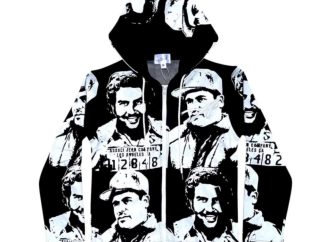2020 was a year of unprecedented changes, and the COVID-19 pandemic was at the forefront of it all. As communities scrambled to understand how to stay safe, journalists across the country sought out new ways to report on this rapidly evolving crisis. Now, The Times has adopted CDC COVID data for more comprehensive reporting –
2020 was a year of unprecedented changes, and the COVID-19 pandemic was at the forefront of it all. As communities scrambled to understand how to stay safe, journalists across the country sought out new ways to report on this rapidly evolving crisis. Now, The Times has adopted CDC COVID data for more comprehensive reporting – giving readers an unparalleled look into one of the biggest stories in history. In this blog post, we’ll explore what this means for our understanding of COVID-19 and why it matters now more than ever before.
What is CDC Covid?
The Centers for Disease Control and Prevention (CDC) has announced the adoption of Covid, a data collection system that will provide more comprehensive reporting on communicable diseases. Covid will allow for more timely identification of outbreaks and better determination of health trends.
How is CDC Covid Used by The Times?
The Times is using CDC Covid data to help with more comprehensive reporting. Covid helps The Times track outbreaks and see trends in disease transmission. This data can help make a difference when it comes to public health decisions. For example, it can help determine which areas need extra vaccine doses or attention from public health officials.
What are the Benefits of CDC Covid?
Since its inception, CDC Covid has helped health care providers and researchers capture and share information more efficiently. This data-sharing platform is revolutionizing the way we understand and manage chronic diseases. Here are some of the benefits of using CDC Covid:
1) Better Patient outcomes: With accurate and up-to-date information, health care providers can address patients’ symptoms more effectively and optimize their treatments. This leads to better patient outcomes, including reduced morbidity and mortality rates.
2) More informed policymaking: Our understanding of diseases evolves with new research, so it’s important that policymakers have access to the most comprehensive data available. CDC Covid helps them make informed decisions about public health priorities and funding allocations.
3) Increased transparency: By sharing data in a common format, we can help build trust between stakeholders and increase transparency around health care operations. This strengthens our ability to hold institutions accountable for their actions and improves accountability across the healthcare system.
4) Enhanced collaboration: Using CDC Covid makes it easier for different organizations, such as hospitals, research institutes, and insurers, to work together. This fosters greater innovation and cooperation in the pursuit of leading-edge healthcare solutions.
Limitations of CDC Covid
The Centers for Disease Control and Prevention’s Covid surveillance system has been adopted by The Times as the primary source of data for more comprehensive reporting on coronavirus disease. However, there are several limitations to this system that should be considered when using Covid data.
First, Covid is a case-based surveillance system, meaning that it does not capture information on deaths or illnesses caused by coronavirus. Second, Covid only captures information about confirmed cases of severe acute respiratory syndrome (SARS), which is the most common form of the virus. Because other forms of the virus – such as severe acute respiratory syndrome-like illness (SARS-CoV 2 ), which is less severe but can cause similar symptoms, and non-severe acute respiratory syndrome (N SARSCoV ), which is milder – are not captured by Covid, it cannot provide a fully comprehensive picture of coronavirus activity. Third, Covid only records hospitalizations and deaths during the initial period of a coronavirus outbreak; it does not capture subsequent cases or deaths associated with the outbreak. Finally, because Covid is based on reported cases only, it may underreport actual incidence rates of coronavirus disease since not all cases are reported to authorities.





















Leave a Comment
Your email address will not be published. Required fields are marked with *